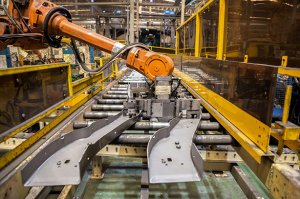Which Operating Model Poses the Lowest Risk for Your Manufacturing Goals?
04.08.21 Evaluating the investment risk is necessary when making the decision to expand your operations or diversify your manufacturing portfolio. Weighing the risks against the benefits of each option will help you find the operating model that’ll best fit your needs.
Evaluating the investment risk is necessary when making the decision to expand your operations or diversify your manufacturing portfolio. Weighing the risks against the benefits of each option will help you find the operating model that’ll best fit your needs.
Shelter Service Model
U.S. manufacturers that want to reduce their legal risk when operating in Mexico but still maintain full control over their production appreciate the shelter service model. It is the most common route foreign manufacturers take due to its cost-effectiveness, minimized risk, and overall stability of this type of setup.
A shelter service provider essentially acts as the local entity on record, which eliminates legal, financial, and compliance liability for U.S. manufacturers. This type of operating model also delivers a faster startup time than other options, reduced costs, and customized solutions to meet specific needs. It encompasses all the advantages of nearshoring to Mexico with none of the hassle.
Contract Manufacturing
Another option is contract manufacturing, which involves hiring another company or group of consultants or employees to perform individual tasks. This operating model requires hiring people to take on tasks and responsibilities that can’t be handled internally. It’s slightly different from outsourcing where third-party vendors are hired to complete processes that could be performed internally.
Although contract manufacturing may appeal to some due to the potential of lower prices, the risk is much higher than working within a shelter model. The company has no control over the quality and efficiency of the work performed by the contractor. Plus, they can only rely on a certain segment of expertise versus having a full suite of managed services available to them as with a shelter.
Joint Venture
A less popular but still viable method of nearshoring to Mexico is the joint venture. This is when two or more companies work together to complete their specific projects. All parties contractually agree to share resources, profits, and losses as they work to meet a collective goal. Immediately, there’s a higher risk because a joint venture requires shared control over operational decisions.
The benefits of a joint venture include shared knowledge and expertise, as well as financial assistance when entering a new market. However, differences between companies can lead to problems and project delays. Though jointly tied, each manufacturer still has their own priorities, management styles, and culture to address. When these don’t align, it could derail a positive outcome and ultimately, cost more than anticipated.
Greenfield and Brownfield Investments
Other possible operating models when nearshoring to Mexico include greenfield and brownfield investments. The former is an independent investment that gives full exposure and liabilities, so compliance needs to be one of your priorities.
It’s a beneficial choice for manufacturing companies that already have processes in place for other facilities. However, the startup time needed is way longer when compared with the shelter option. This operating model also holds the highest risk and faces upfront costs for permits, construction, hiring, and compliance infrastructure.
